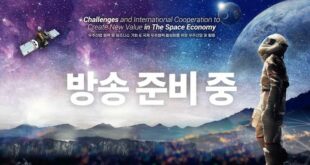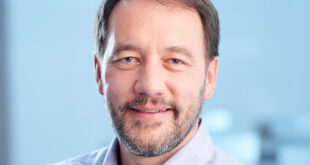by Emma Gatti

How does the world outside the Space bubble perceive our domain? And what can we do to promote our own sector in a productive, modern and fruitful way? On the 22nd and 23rd of June 2022 the Secure World Foundation 4th Summit for Space Sustainability discussed this profoundly modern issue with a panel of communication and public relations experts. It turns out that the challenges are bigger than they seemed, and yet we must overcome them.
EXCLUSIVE AND EXPENSIVE
Space still stands solidly where it was when Nixon shut down the Apollo program in terms of its core public-image question: why should tax-payers fund something so unrelated to Earth and everyday life? Why shall we spend money on space when we have urgent global problems to solve, such as poverty and climate change? Absurd as it sounds, we have not yet learned to answer these questions. The recent attention from the general media, focused mainly on peripheral topics such as Elon Musk’s Twitter gossip, or Richard Branson’s and Jeff Bezos’s forays into lower space in their private rockets with overly-rich old millionaires and their unrealized dreams, paradoxically does not help.
As interesting as space can be, the reason we care is because of the benefits we receive
Space, suggested Daniel Smith, Founder and Creative director of AstroAgency, has always been perceived as something exclusive and expensive, a closed circle of friends that talk only to each other, and the focusing of public attention only on the multi-millionaire space-tourist does not help transmit the message that Space is for all humanity. It’s interesting to observe how this opinion reverberates also on social media. Camille Calibeo, business developer at Orbit Fab and Space influencer, pointed out that on social media “There is a lot of enthusiasm but also a lot of negativity. I see the general public commenting all day their perceptions of the space industry. And they hit exactly that button -It’s a waste of time and money- or -We have so many problems here on Earth, why are we spending money and time and energy on space-.” The industry should start talk to the outside world, they both suggested. Indeed, but what message should be transmitted? Herein lies the PR problem: either the domain at large has not decided, or has decided not to think about it yet.
SPACE FOR EARTH
One of the most important parts of Space communication is concerned with young blood recruitment, attempting to raise the interests and passions of the younger generations, to turn the children of today into the electric engineers of tomorrow. It makes sense that a part of the domain, especially the government sponsored one, is concerned with infusing that passion, interest and sheer curiosity into the young. Nevertheless, children don’t pay taxes and don’t vote, which means that there should be also an adult-directed outreach, focused on what Space can do for humanity in a very practical sense.
The real money of the New Space economy comes from communication satellites, and in general from the uplink and downlink sectors: data, monitoring, communication and everyday digital and logistical services. Letting you pay your bills via online banking, register for a hospital appointment, reach a destination, live in a cleaner city, avoid a hail storm so that your car’s windshield doesn’t get smashed and your insurance premiums don’t go up – all of these are less catchy applications, but they are the backbone of the New Space industry and the major selling points of the agencies needing to show that public funds are applied to real-life issues. Clear and compelling information on how Space can be useful for local communities should be at the core of the communication strategy, for example inserting a Space for Everyday Life section in every website of agencies/private companies. As Krystal Azelton, Director of Space Application Programs at Secure World Foundation, highlighted “As interesting as space can be, the reason we care is because of the benefits we receive”.
SPACE FOR HUMANITY
A survey described during the conference highlighted how “Astronaut” has fallen out of grace as dream-job among the western children, whose wannabe-jobs now are Youtubers or Vloggers. Does this testify the Space industry’s inability to set up effective PR campaigns? Maybe. But maybe it’s also a testament to the shift in core values of the new generation towards the job market. As Melissa Thorpe, Head of Spaceport Cornwall, suggested “new generations want to work for a purpose, not for big dollars”. Students out of university search for small startups where they can express themselves, rather than big corporations. They insist on values such as environmental commitment, ethical products and gender equality. So maybe the right PR approach to attract the new generations is to show how Space can marry those principles and help humanity to move to the next level, a level in which values over-looked so far (ecological preservation, biosphere equilibrium, global health for humans and animals, wealth distribution, new solutions for feeding humanity, human-centered communities) can become flagship activities within a different global economic mindset. Therefore, together with clear statements of the benefits of Space to urgent issues and local community problems (traffic, banking, security, health), Space should also present a broader vision of how it can help to resolve the global issues humanity is facing. This would provide a concrete vision of where Space can take us, and engage youth more effectively than selling them a naive dream.
ENGAGE WITH THE PUBLIC
The Space domain, like many other fields of scientific endeavour, does not like to engage with the public and discuss its technical problems with the community. However, the industry is still bound by Earth’s rules and local regulations, and it is intrinsically connected to the people, whether it likes it or not. It would be a terrible mistake to think that we can live within the boundaries of our technological privilege and never engage in real-life discussions with the communities we belong to. As Thorpe pointed out, “Why do we care to change people’s perceptions of the space industry? Why does it matter if a farmer cares about a satellite monitoring the crops? Because we need the people to understand why these projects are important, so that we can get projects through. I think we don’t need necessarily to convince people, but we need to help them to understand why space is important. We need to tell the story better, because otherwise we’ll just miss out on huge opportunities”.
BRING IN THE HUMAN FACTOR
How do you engage the public when the topic under discussion is the best way to fix a transistor to a piece of equipment that serves Google Maps? Farzana Baduel, CEO at Curzon PR, suggested the focus should be on the human factor by bringing in some human storytelling that explain the challenges the Space science sector faces every day, and try to expand this dialogue among people not involved day-to-day in the sector, such as artists and musicians. Already NASA adopts a similar strategy, involving actors and graphic designers to help communicate some of their more important projects.
New generations want to work for a purpose, not for big dollars
Baduel suggested also digging into the rich world of TV entertainment to bridge the gap between science and real life, for example creating live reality TV shows where tech entrepreneurs have to work around problems and compete with each other. The human factor must be included in the storytelling to make it vibrant, and certainly a multidisciplinary approach including visual artists and social scientists is the way forward, but let’s not forget that the Space industry at its core is made of people who do not search for fame or TV stardom, and might not feel as comfortable as Richard Branson in showing off in front of a camera. This human factor should also be taken into account, maybe by focusing on the creation of space-intermediaries who function as translators between the core-scientific industry and the public.
DON’T DODGE THE HARD QUESTIONS
Covid has taught the scientific community how dangerous it is to keep approaching scientific communication as monolithic lectures transferred from teachers to children. Knowledge nowadays should be transferred with a bottom-up approach, explaining the facts and including the risks and potential harms in the discussion. The public won’t accept simple statements such as “Trust me, I am a scientist”, and nor will the media. As Peggy Hollinger, International Business Editor for the Financial Times, highlighted, the Space sector must get out of this space-dream phase and start to include the difficult questions into its PR approach: Do some operations include risks or environmental hazards? If yes, which ones? How are the wider benefits from space going to be distributed? When and to who? All of these questions must be answered transparently and openly, and space agencies and the private sector must be ready to gather information regarding their services, the potential environmental and health risks, and – importantly – to share them. Otherwise, we will simply maintain the same muddy relationship between industry, media and public, and we have learned the hard way that shadowy communication is a double-edged sword. Oil companies and tobacco lobbies avouch.
We need to tell the story better, because otherwise we’ll just miss out on huge opportunities
CRAFT THE MESSAGE AND STICK TO IT
Ultimately, the New Space era is not only a blossoming field of economic opportunity, but also an occasion to do things better on every level, communication included. The key words from the Secure Worlds Foundation meeting were transparency, applied space science for Earth, and sustainability backed up by concrete examples, human-to-human storytelling and global engagement in a more humble and straightforward way. The bottom-line message is that communication must originate from within the sector, but must be aimed at the outside world, particularly at all the non-space stakeholders out there who need or want to engage with us. Community engagement, transparency and bottom-up communication strategies are a mean to create a supportive public, which in turn can increase the ability to get funding, encourage the creation of good policy and concretize the concept of space for all humanity. It’s up to the space domain to decide whether to remain within its naïve self-declared “space is cool” bubble, or be up to the challenge and offer a more mature and up to date image of itself.
The article is part of a joint collaboration between SpaceWatch.Global and Secure World Foundation, focused on creating a new communication language, strategies, and outreach environment for the Space domain at large. For more information about this initiative and the goals of the Space Communication Project please email Krystal Azelton ([email protected]) or Emma Gatti ([email protected])

Dr. Emma Gatti is a Cambridge graduated and former NASA scientist with ten years of experience in the field of planetary science and geology. She was working as a post-doctoral scholar at Jet Propulsion Laboratory and California Institute of Technology before returning to Milan in 2018 to start working as space analysts in the field of Space Economy and Space Policy. Since 2021 she is the Senior Editor and radio host for SpaceWatch.Global. She has penned several articles focused on Space sustainability and Space communication issues.





